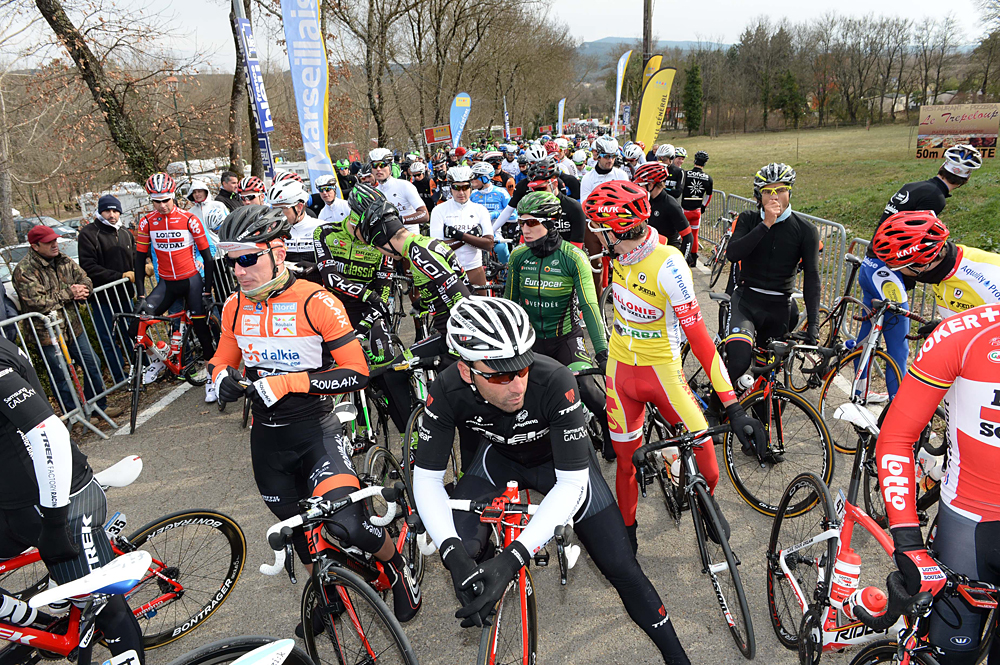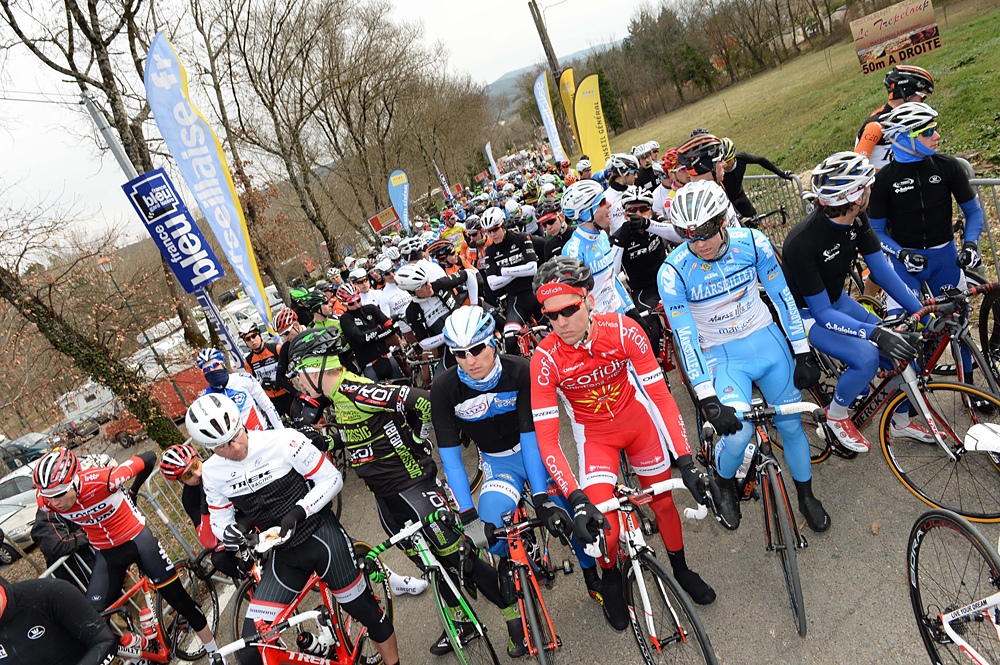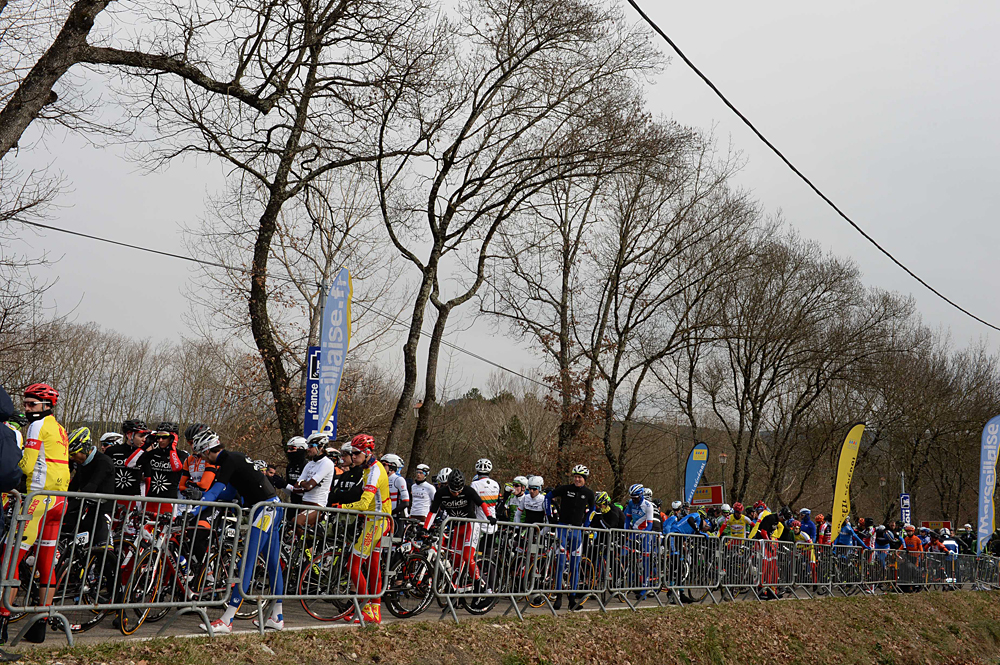Riders' weather protest falls on deaf ears in Etoile de Besseges
Organisers coax reluctant peloton to finish of stage 2



Just days after North American riders announced the formation of a new rider's association, ANAPRC, and its first aim of establishing an Extreme Weather Protocol for professional cycling, the failings of the current system were underscored at the second stage of the Etoile de Besseges.
Facing temperatures barely above freezing, and with north winds gusting up to 54mph (87kph) and steadily blowing at around 30mph, it felt more like -26 degrees (-30C), and the howling gusts caused several crashes. The riders three times tried to stop the race in protest, but their efforts fell upon the race organisers' deaf ears.
The 157 kilometer stage from Nîmes to Les Fumades passed through the finish after 54km, and was to then race another 87km large loop before hitting the start of three 7.7km laps.
An attack from the gun came from Thomas Vaubourzeix (Veranclassic-Ekoï), with Evaldas Siskevicius (Team Marseille 13-KTM) and Tim Kerkhof (Roompot) in pursuit, all heading straight into the frigid north wind. The agony was compounded when the course turned to the west, with the peloton entirely exposed to the high gusts.
Controlled by Lotto Soudal for race leader Kris Boeckmans, the peloton pulled the trio back, and when they reached Les Fumades, the entire bunch stopped to protest the conditions.
"The protest was for the wind, not the cold!" Trek Factory Racing team director Alain Gallopin said. "It was very, very dangerous for the wind in the first hour and it was for the security of the riders they spoke with the organization. But okay, I told the guys that if you go slowly it is not dangerous. Once they entered the forest it was better, but until then it was not safe for the riders."
The peloton lobbied in Les Fumades for a truncated stage on the short finishing circuits, but the race organisers insisted they continue. The race got back underway, and immediately Kerkhof attacked again, going solo off the front while the peloton continued to try and bargain with race organisers.
Get The Leadout Newsletter
The latest race content, interviews, features, reviews and expert buying guides, direct to your inbox!
Twice more, the bunch stopped, while Kerkhof, oblivious, built up a five minute advantage, and the peloton's average speed was so slow that the sun looked as if it might set before they crossed the finish line.
Luckily, the wind subsided and the race continued, finishing well behind the schedule with Wanty-Groupe Gobert's Roy Jans winning the stage. "There was a lot of wind. It was really dangerous for us, especially early in the stage," Jans said to Direct Velo. "That is why the peloton rode really slowly. There were falls all the time. Now I'm happy to have finished the race!"
Boeckmans stayed safe with his team until 1.5km from the finish line when he was caught up in a crash, but maintained his lead in the general classification. "There was much discussion in the pack to whether to continue or not," Boeckmans said. "I followed the general decision. It was dangerous but after two hours of racing, there was less wind."
The situation is similar to many others faced by the professional peloton, and is one the ANAPRC hopes to address, together with the CPA, race organisers and teams.
Brent Bookwalter (BMC), one of the board members of the nascent organisation, told Cyclingnews yesterday that the Extreme Weather Protocol was the first priority for the group. "Right now the decision on if we race is purely discretionary. It's decided on the road, in the race, by someone making a call. We're all at fault sometimes and nobody is perfect. It's a very difficult decision to make. We think there needs to be a set protocol of how the decision is made and how it's communicated to the teams a riders and sponsors,” Bookwalter said.